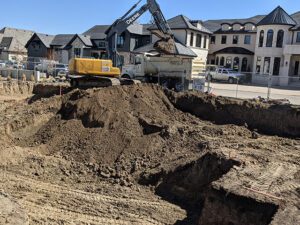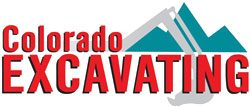In site development, before anything can be built upon any plot of land, you – the developer – will need to prepare the site of your future development. As any prospective developer knows, undertaking any sort of development project is a substantial investment, as well as a possible substantial risk, and taking the proper land development steps first can mean a smoother development process later. In this article, we’ll go over the process of site development, and fill you in on things you need to consider as a future site developer.

Formulating a Development Plan
As with any successful project, the first step in site development is a site development plan. In formulating this plan, you’ll need to keep several things in mind – your needs and wants for this site, the site’s surroundings, and environmental and state concerns.
Your Needs
Ask yourself what, precisely, you want this new development to be. You more than likely have a solid idea in mind, but forming a solid idea of your property’s purpose and needs is the first step you will need to take. Will this plot be a residential development, complete with the utility hooks needed to accommodate dozens of people? Or will it be an industrial site, with relatively few amenities albeit with a much wider footprint?
Work with your development partners to nail down the answers to those questions, and the subsequent follow-up questions.
The Surroundings
Precisely how your site is developed depends heavily on the state of the landscape around it. Developers need to take into account how their site will fit into the greater area, and consider how infrastructure will mesh with the preexisting infrastructure bordering it.
Take note, for example, of which streets will run parallel to your lot. How will cars leave and enter your lot? Where should these cars park? How will your site guide pedestrians, and keep their walkways safe and attractive?
Further, consider what your site will need to do in order to mesh with its community. What building styles do the neighboring and other local buildings use? Does this area of town favor car traffic and parking lots, or foot traffic and walkability? What building motifs should you include?
This is by no means an exhaustive list. Consult your site development partners for more.
The Environment
Keeping your lot environmentally compliant is the most important part of keeping it safe and structurally secure in the years to come.
Consider things like drainage – in the case of rain, where will excess water drain? Is your locality at risk of floods? Prolonged water exposure in a building’s foundation can cause significant damage over time.
Also worth consideration is elevation, ask yourself what you need to do to ensure your lot is completely flat for future development, and to ensure that your site is safe from slope-related issues (think water and debris flowing downhill).
Zoning
Every division and sub-division will have its own set of site development and zoning rules that govern what can and cannot be done with any given plot of land. If you’re a developer, zoning can simply never be ignored. Establish that the development you’re planning for your site matches that which is allowed by your locality, and check with local officials that your plan is approved before breaking ground.
Zoning rules may not always be cut and dry, either. Depending on the precise use(s) of your new development, it may be smart to clear your concept with the proper local authorities first, especially if, for instance, you are planning on building a mixed-use structure in an explicitly commercial or residential zone.
The experts at Colorado Excavating are here to solve your site development problems. Get in touch today.

